The Lavender Hill Mob (1951)
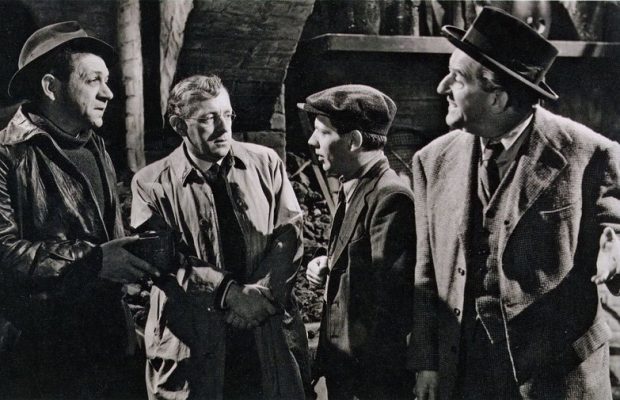
Toronto Film Society presented The Lavender Hill Mob (1951) on Sunday, March 21, 1982 in a double bill with Picnic as part of the Season 34 Sunday Afternoon Film Buffs Series, Programme 9.
Production Company: Ealing Studios. Producers: Michael Balcon, Michael Truman. Director: Charles Crichton. Original Screenplay: T.E.B. Clarke. Photography: Douglas Slocombe. Art Director: William Kellner. Editor: Seth Holt. Music: George Auric. British Release Dates: (West End premiere) June. General Release: Sept. 3, Odeon Circuit.
Cast: Alec Guinness (Holland), Stanley Holloway (Pendlebury), Sidney James (Lackery), Alfie Bass (Shorty), Marjorie Fielding (Mrs. Chalk), Clive Morton (Police Sgt.), Meredith Edwards (Police Const.), Patrick Barr (Inspector), Audrey Hepburn (“Chiquita”), Edie Martin, Roald Adam, John Gregson, Sidney Tafler, Michael Trubshaw, Robert Shaw, etc..
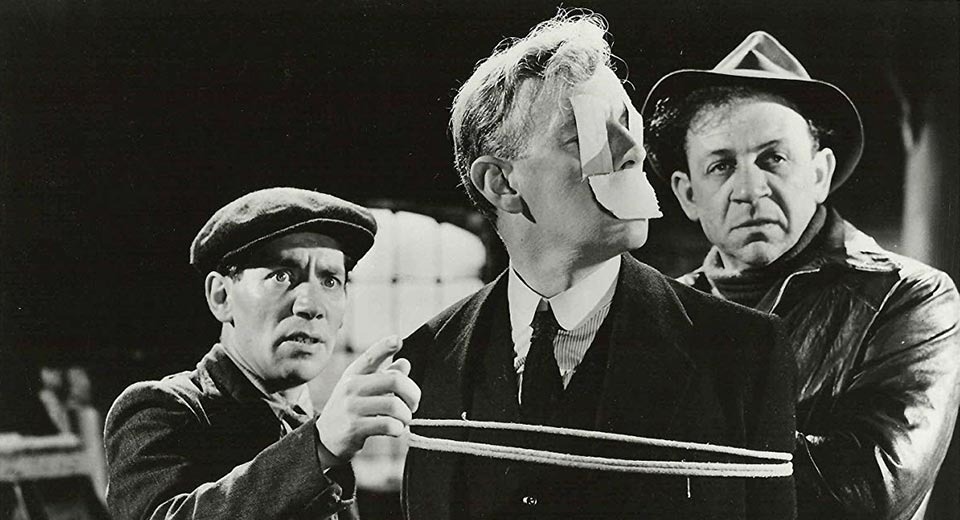
T.E.B. Clarke’s story and screenplay won an “Oscar”, a most unusual honour for a British film at that period, even more so in writing than acting.
As visitors to Britain may now, Lavender Hill is a section of Metropolitan London. On the other hand, visitors may well not know this for the area is not promoted, being neither scenic nor historic. It is a shabby-genteel, largely working-class district, and a large part of what it is working on could be a modest aspiration to become lower middle-class. Above all, Lavender Hill is (or was) a place of almost aching respectability. Thus, the bright team at Ealing Studios naturally thought of Lavender Hill as the perfect setting and springboard for unexpected crime. In much the same way, the section by the Thames on the unfashionable side of Chelsea Bridge had been selected for an earlier Ealing comedy, also scripted by T.E.B. (“Tibby”) Clarke. Passport to Pimlico had, underlying its fun and satire, a feeling–at least for Londoners–that Pimlico was the least likely part of the city to have ever been legally connected with France. Ealing Studios’ people clearly knew their London well, including the less romantic or favoured parts, although one can be reasonably certain that they didn’t actually live in the latter.
At this period, Alec Guinness was tirelessly appearing in popular English films–mostly comedies, for Ealing and other firms,–while trying his still fairly youthful wings in the classics on stage. (His Hamlet was done in London in 1951, between the making and release of this film: two summers later, he, of course, helped to launch a new venture in some mysterious and untheatrical place named Stratford, Ontario.) His virtuosity was quickly becoming famous. Mr. Holland’s round face and demure manner would soon be contrasted dramatically (and comically) with the patrician young Sidney Stratton in Alexander Mackendrick’s The Man in the White Suit–also from Ealing, 1951–and the jaunty rags-to-riches protagonist of Ronald Naeme’s film of Arnold Bennett’s novel The Card (a.k.a. The Promoter, 1952). Guinness and Stanley Holloway, an older veteran of Ealing comedies, make a nice pair here, expanding to a quartet with the talents of emerging character players, Alfie Bass and Sidney James, the latter not yet stuck in the mud of those determinedly dirty Carry On pictures. As for the brief appearance of young and “smashing” Audrey Hepburn, she still had two years to go before being rescued by William Wyler from the characteristic myopia of British studios towards young ladies of knockout potential.
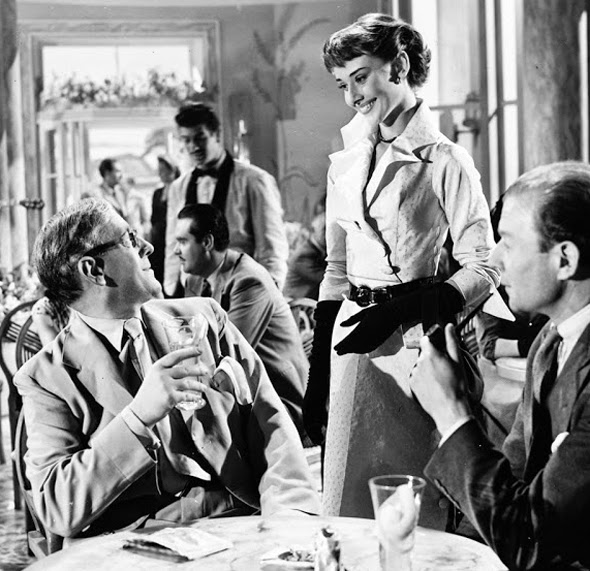
It’s been remarked before that what Ealing built up in their dramas and social films they happily knocked askew in their comedies. The values of respect for law and the goodness, close to saintliness, of the police that had been celebrated the previous year in Ealing’s The Blue Lamp were here lampooned, albeit mildly, especially later scenes with police cars and “Bobbies in blue” which are a gloss on Basil Dearden’s high-minded crime thriller. And “Tibby” Clarke had scripted that, too. The Lavender Hill Mob, like The Blue Lamp, proved tremendously popular, perhaps reflecting a British propensity for having things both ways, but always in moderation and with nothing nasty showing through Lavender Hill’s imitation lace curtains.
Notes by Clive Denton

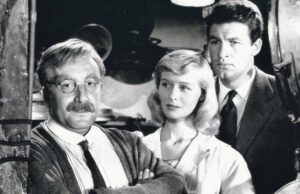

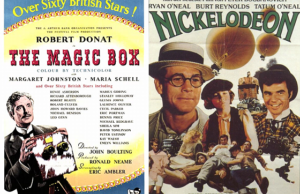






Leave a Reply